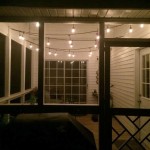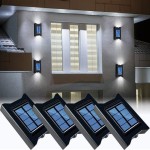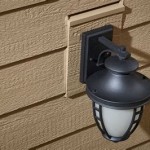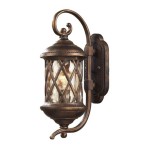How To Run Outdoor PVC Conduits
Outdoor PVC conduits are essential for protecting electrical wiring from the elements. They provide a safe and durable pathway for electrical conductors, shielding them from moisture, sun, and other environmental factors. Properly installing PVC conduit outdoors ensures reliable and safe electrical service for your home, building, or outdoor project.
This comprehensive guide will walk you through the process of running outdoor PVC conduits, covering essential steps, safety considerations, and best practices. By understanding these guidelines, you can confidently install your conduit system and ensure a long-lasting and secure electrical connection.
1. Planning and Preparation
Before beginning any electrical work, it is crucial to prioritize safety. Consult local building codes and electrical regulations for specific requirements related to conduit installation. It's also essential to obtain the necessary permits and inspections to ensure compliance.
The first step is to carefully plan the conduit route. Consider the following factors:
- Location of the electrical source and load: Determine the starting point and destination of the wiring.
- Obstacles and obstructions: Identify any potential obstacles, such as trees, fences, or buildings that may require adjustments to the conduit path.
- Environmental factors: Account for sunlight exposure, temperature variations, and potential for flooding or water damage.
- Aesthetic considerations: Choose a route that blends seamlessly with the surrounding environment, keeping in mind the visibility of the conduit.
Once the conduit route is established, gather the necessary materials, including:
- PVC conduit in the appropriate size and length
- Conduit fittings (elbows, tees, couplings)
- Conduit clamps and hangers
- Electrical wire or cable (matching the conduit size and load requirements)
- Tools for cutting and connecting conduit (hacksaw, conduit cutters, wire strippers)
- Level, measuring tape, and marking tools
- Safety equipment (gloves, safety glasses, work boots)
2. Installing the Conduit
With the materials ready, follow these steps to install the PVC conduit:
- Mark the conduit path: Use a level and measuring tape to mark the starting point and end point of the conduit run, ensuring the route is straight and level.
- Dig a trench: For underground conduit runs, dig a trench deep enough to accommodate the conduit and provide adequate cover. Consult local codes for minimum trench depth requirements.
- Install conduit supports: Use conduit clamps or hangers to secure the conduit along its route. Ensure appropriate spacing between supports to prevent sagging or excessive strain.
- Connect conduit fittings: Use the appropriate fittings to create bends, turns, and connections. Ensure a snug and secure fit to prevent leaks or movement.
- Pull the wire: After installing the conduit, carefully pull the electrical wire or cable through the conduit. Use a wire pulling lubricant to reduce friction and facilitate the process. Make sure the wire can be pulled freely without snags or resistance.
3. Finalizing the Installation
Once the electrical wire is installed, there are a few final steps to complete the outdoor PVC conduit installation:
- Connect to the electrical source: Make sure the electrical power is disconnected before connecting the conduit to the electrical source. Connect the conduit to the electrical panel or junction box using the appropriate wiring methods.
- Secure the conduit ends: Use conduit fittings to securely seal the ends of the conduit to prevent moisture intrusion.
- Backfill the trench: After installing the conduit underground, carefully backfill the trench with soil, compressing it to ensure a secure and stable installation.
- Inspect the installation: Before energizing the electrical system, perform a thorough inspection to ensure that all connections are secure, there are no leaks or gaps, and the conduit is properly supported.
By carefully following these steps and adhering to safety practices, you can confidently install outdoor PVC conduit for your electrical wiring. This will ensure a reliable and safe electrical system that is protected from the elements and enhances the longevity of your electrical infrastructure.

Cantex Pvc Weatherproof Exposed Electrical Box Installation

Installing Pvc Conduit Diy Electrical Wiring

How To Run Electrical Wire Outside Hunker

Electrical Pro Tip 31 Learn About Pvc Conduit Be A From The Pros 10 30 M

What Electrical Conduit To Use Outdoors Finnley

Calculating How Deep To Bury Outdoor Electrical Wire Doityourself Com

Installing Pvc Conduit Home Electrical Wiring Diy

Installing Conduit To Outside Shed Wall Doityourself Com Community Forums

7 Types Of Electrical Conduits And What You Need To Know Industry Articles

Wiring Pipes 25mm 32mm 40mm Electrical Pvc Rigid Conduit Duct China Made In Com
Related Posts







